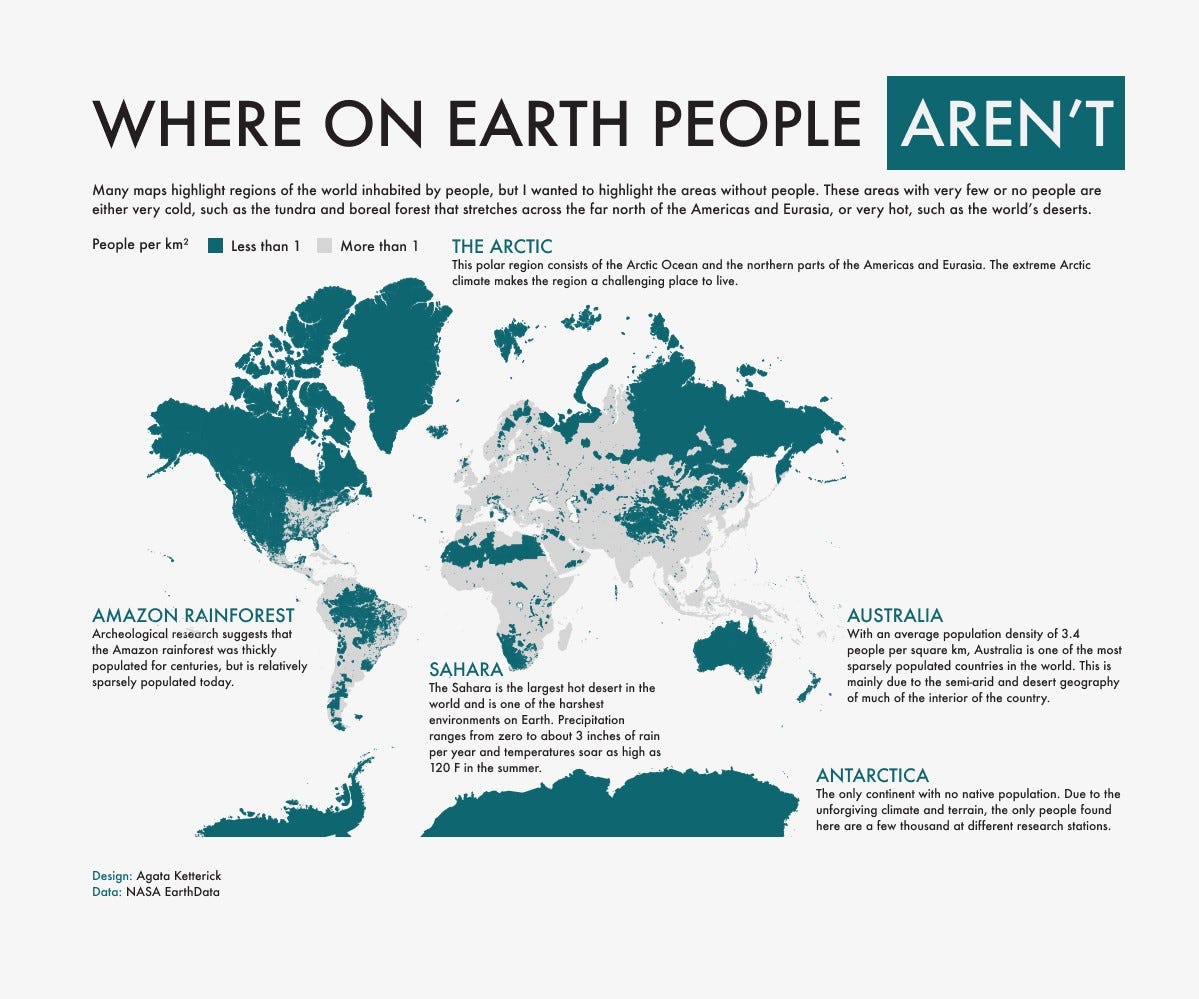☢️Nuclear Power Plants,🕵️♂️Sherlock Holmes & more...
[Issue #6] This week we are answering - Which countries in the world are embracing nuclear power? How popular is Sherlock Holmes? and Where on earth people aren't? Let's dive in ⬇️
Every Nuclear Power Plant
Creator: Preyash Shah
Insights
There are 32 countries in the world with at least one operational nuclear power plant.
China seems to be heavily investing in building its nuclear energy capacity with 23 plants under construction and 35 planned.
Among European countries, France has the highest nuclear energy capacity and it heavily reliant on it for its energy needs. In 2022, nuclear energy accounted for 62.6% of France's total electricity production. By comparison, the share of nuclear electricity generation in the United States stood at less than 20 percent.
The Sherlock Holmes timeline
Creator: Jessica Bautista
Insights
Sherlock Holmes is the most-filmed fictional character of all time.
According to Guinness World Records, Sherlock Holmes has been portrayed in over 250 films and television shows. This is more than any other fictional character, including James Bond, Harry Potter, and Batman.
The first Sherlock Holmes film was released in 1900, just 13 years after the publication of the last Sherlock Holmes story.
This silent film, called Sherlock Holmes Baffled, was only 15 minutes long and featured William Gillette, who was also the first actor to portray Sherlock Holmes on stage.
The most popular Sherlock Holmes adaptation is the BBC series Sherlock. The series ran from 2010 to 2017 and starred Benedict Cumberbatch as Holmes and Martin Freeman as Watson. It was a critical and commercial success, and it was nominated for 13 Primetime Emmy Awards.
Where on earth people AREN'T
Creator: Agata Ketterick
Insights
According to the Global Human Settlement Population Layer (GHSL), approximately 40% of the Earth's land surface has a human population density of less than 1 person per square kilometer. This includes deserts, mountains, rainforests, and polar regions. These environments are often difficult or impossible to live in due to extreme temperatures, lack of water, or other environmental hazards.
A study published in the journal Nature Sustainability found that the population density of human settlements in remote areas has declined by an average of 1% per year since 1960. This is likely due to a combination of factors, including climate change, economic hardship, and political instability.
The same study found that remote areas with low human population density are home to a disproportionate amount of the world's biodiversity. This is because these areas are often less disturbed by human activities, such as agriculture and development.
… and that’s our Insight Scoop for this week!
If you found some value from this post, then please forward it with your friends, family and network :)







